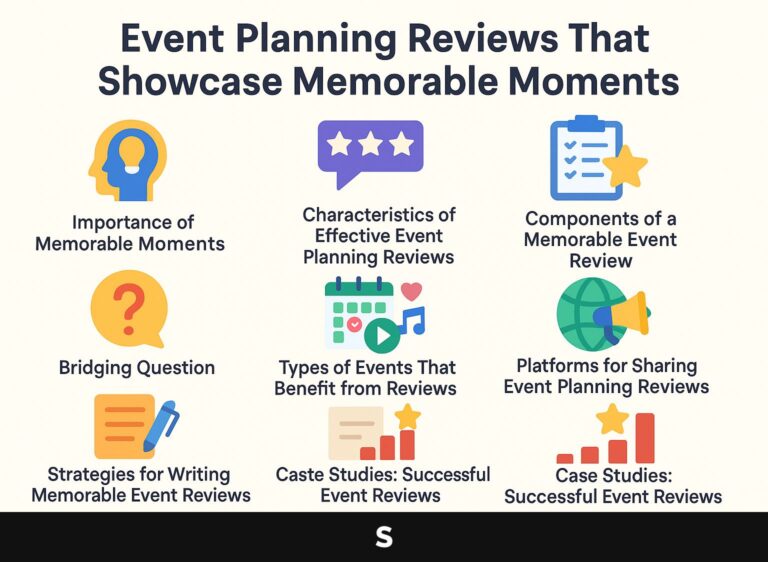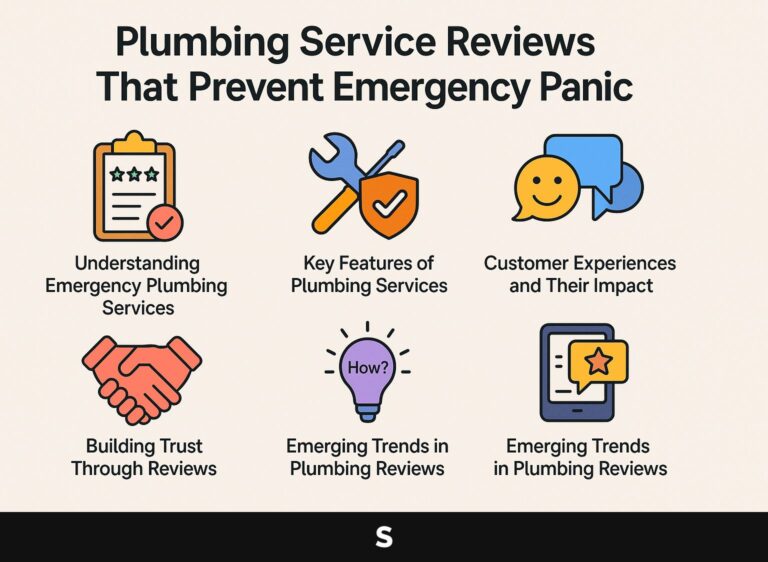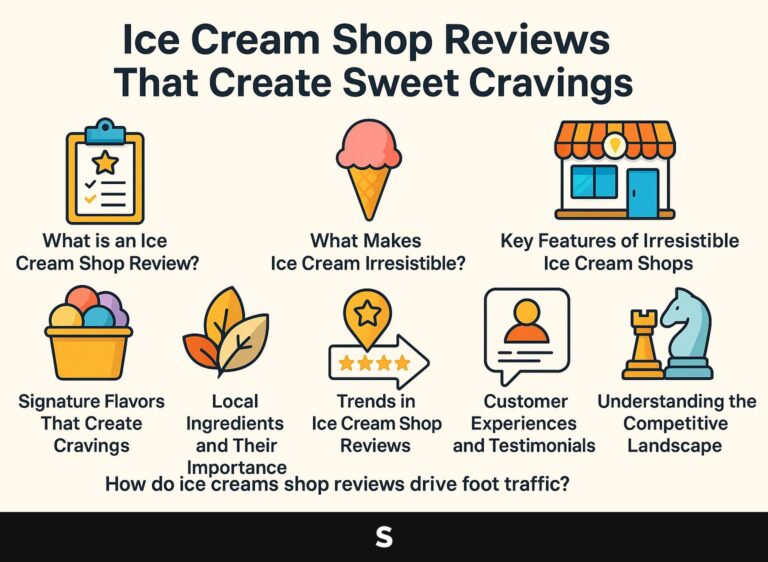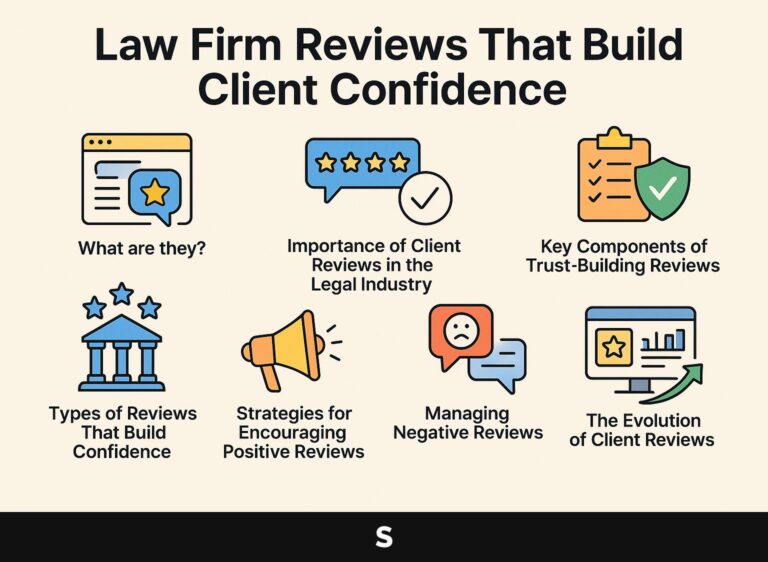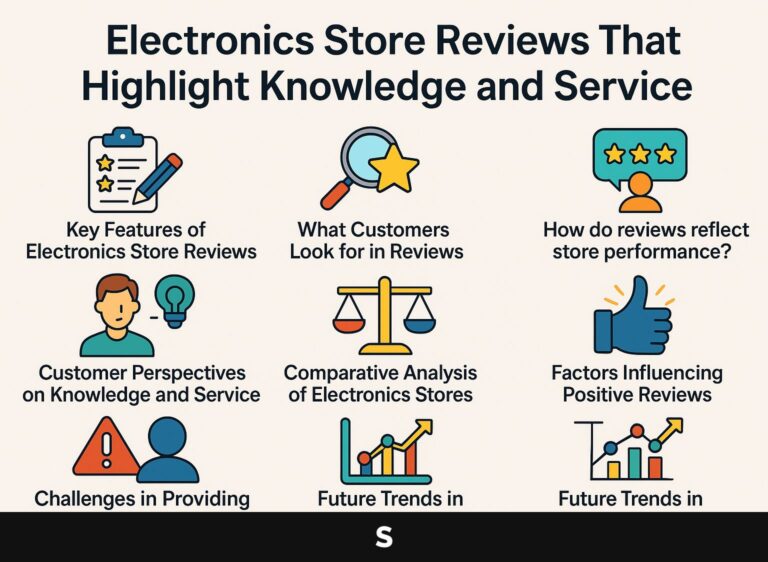Business Consultancy Reviews That Demonstrate Real ROI
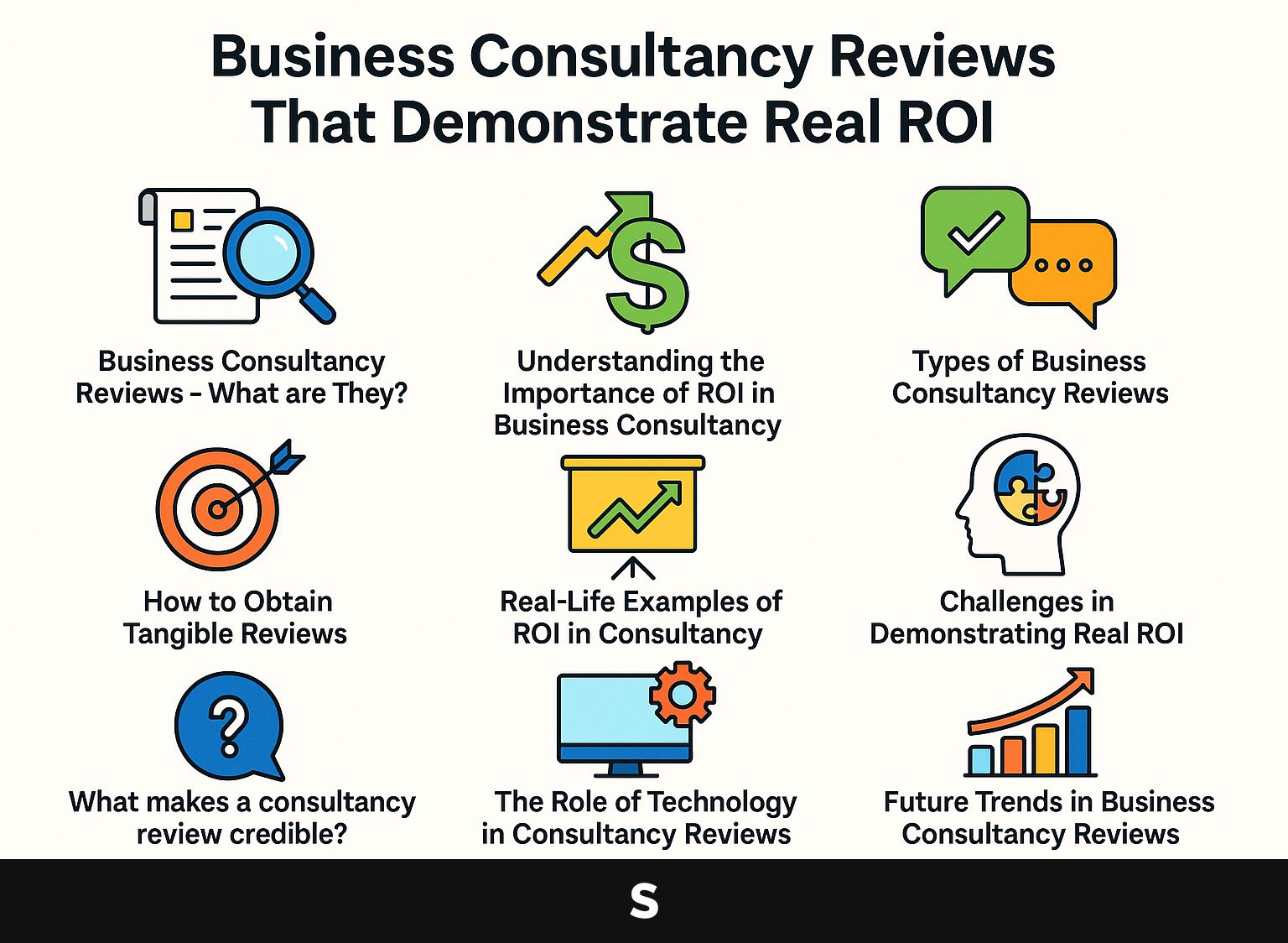
In the competitive field of consulting firms, demonstrating real results is important for attracting clients and getting repeat business. As advocated by ROI experts Jack Phillips and Patricia Pulliam Phillips, effective value measurement is essential for demonstrating return on investment (ROI) projections. This article shows how to use business consultancy reviews-such as those provided by Spokk.io-to demonstrate real ROI. It also shares coaching methods and strategies used by top companies like Tata Consultancy Services. Learn how to turn customer comments into strong endorsements that show real business results.
Key Takeaways:
- Business Consultancy Reviews – What are They?
- Recognizing the Importance of Return on Investment in Business Consulting
- Types of Business Consultancy Reviews
- How to Obtain Tangible Reviews
- Real-Life Examples of ROI in Consultancy
- Challenges in Demonstrating Real ROI
- Bridging Question: What makes a consultancy review credible?
- Technology’s Role in Consultancy Reviews
- Upcoming Trends in Business Consultancy Reviews
- Building a Strong Reputation through Reviews
- Leveraging Reviews for Business Growth
- Frequently Asked Questions
- What is the importance of business consultancy reviews that demonstrate real ROI?
- How do real ROI reviews benefit consultants?
- Can real ROI reviews help businesses make better decisions when hiring a consultant?
- How can I find business consultancy reviews that demonstrate real ROI?
- What should I look for in a real ROI review for a business consultant?
- How can I use real ROI reviews to assess the effectiveness of a business consultant?
Business Consultancy Reviews – What are They?
Feedback on business consulting is important for clients selecting services, as it shows results like the 23% profit increase clients saw after working with specialists.
How do reviews impact the consultancy industry?
Reviews are important in consulting because they clarify services and encourage competition between firms. They help build a good reputation as firms use client feedback to make their services better.
Consultants can follow certain steps to improve their online reputation.
- Ask clients for feedback after finishing a project by sending them customized emails or surveys. This can raise the number of replies by 30%.
- Use tools like SurveyMonkey for effective surveys, or Google Forms for simplicity.
- Once gathered, showcase positive reviews on your website and social media; firms with 4.0+ star ratings experience 30% more inquiries.
- Regularly update testimonials to keep your content fresh, building client trust and attracting new business over time.
What constitutes a ‘real’ ROI in consultancy?
A ‘real’ ROI in consultancy is quantifiable and often exemplified by metrics like the 23% profit margin increase reported by clients after implementing consultancy strategies.
To effectively measure and communicate ROI, focus on specific metrics such as revenue growth, efficiency gains, and cost reductions.
For instance, a client may see a 15% reduction in operational costs after adopting new processes recommended during consultancy sessions. Track improvements in team productivity-perhaps an increase of 20% in project completion rates within set timelines.
Keeping track of these results demonstrates the effectiveness of your services and helps improve upcoming strategies so clients keep achieving their goals.
Recognizing the Importance of Return on Investment in Business Consulting
Understanding return on investment (ROI) is important for consulting firm clients because it reveals actual profits and clarifies consulting expenses, influencing choices about future investments.
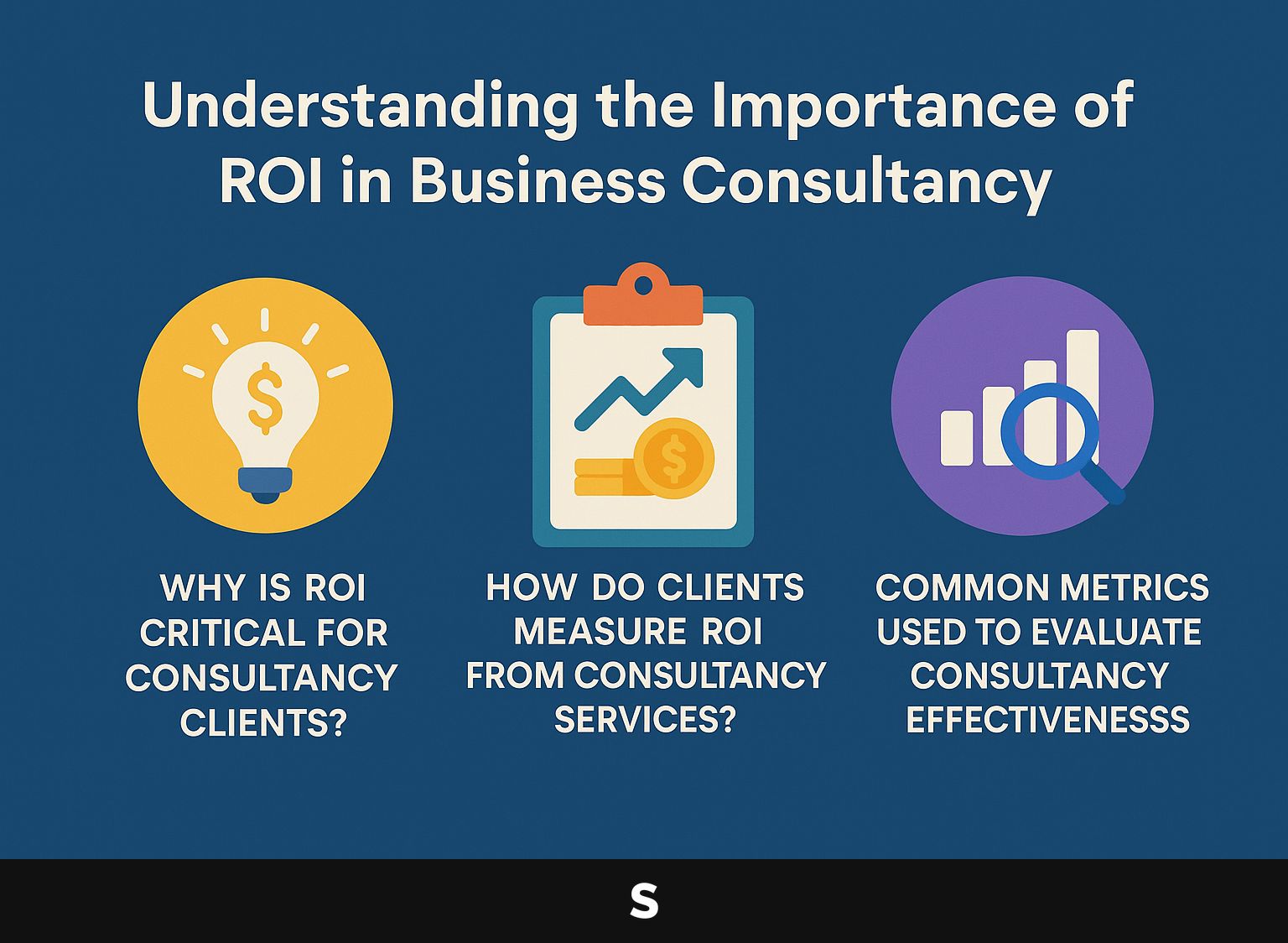
Why is ROI critical for consultancy clients?
ROI is critical for consultancy clients because it provides a clear metric for evaluating the effectiveness and value derived from consulting services, influencing their willingness to invest further.
A financial consulting firm saw a 150% return on investment in six months after improving their reporting methods. By analyzing initial costs against increased revenue, they demonstrated tangible benefits that spurred clients to renew contracts.
Similarly, a marketing consultancy highlighted case studies where clients saw a 200% increase in lead generation following strategic campaign implementations.
These examples highlight the importance of showing clear ROI numbers. This helps justify the initial expenses and supports continued partnerships and investments in consulting services.
How do clients measure ROI from consultancy services?
Clients measure ROI from consultancy services by analyzing improvements in key performance indicators such as profit margins, operational efficiency, and overall customer satisfaction.
To calculate ROI effectively, clients can follow these steps:
- First, identify the baseline metrics before consultancy intervention, such as current profit margins, employee productivity rates, and customer feedback scores.
- Next, collect data post-engagement using tools like Google Analytics for website performance or customer surveys for satisfaction metrics.
- Look at these numbers to see differences-for example, a 15% rise in profit margins or a 30% uptick in positive customer feedback.
- Document these findings to quantify the consultancy’s impact, illustrating clear financial or operational benefits.
Common metrics used to evaluate consultancy effectiveness
Common metrics for evaluating consultancy effectiveness include profit margin increases, efficiency gains, customer satisfaction ratings, and the overall impact on operational costs.
To track these metrics effectively, implement tools like Google Analytics for customer satisfaction through surveys, and Tableau for visualizing operational cost trends.
For instance, after a consulting engagement, analyze profit margins by comparing pre- and post-consultancy financial reports.
A marketing consultancy’s case study revealed that client profits increased by 15% in six months, due to better processes and a clearer knowledge of customers.
Regularly sharing these numbers in quarterly meetings keeps stakeholders up-to-date and involved.
Types of Business Consultancy Reviews
Knowing the various kinds of business consultancy reviews helps in evaluating how well consultants do their job and in collecting client opinions correctly. To gather comprehensive feedback, it’s beneficial to explore different methods, including online platforms like Spokk. Learn more about how to effectively collect customer reviews to enhance your consultancy business.
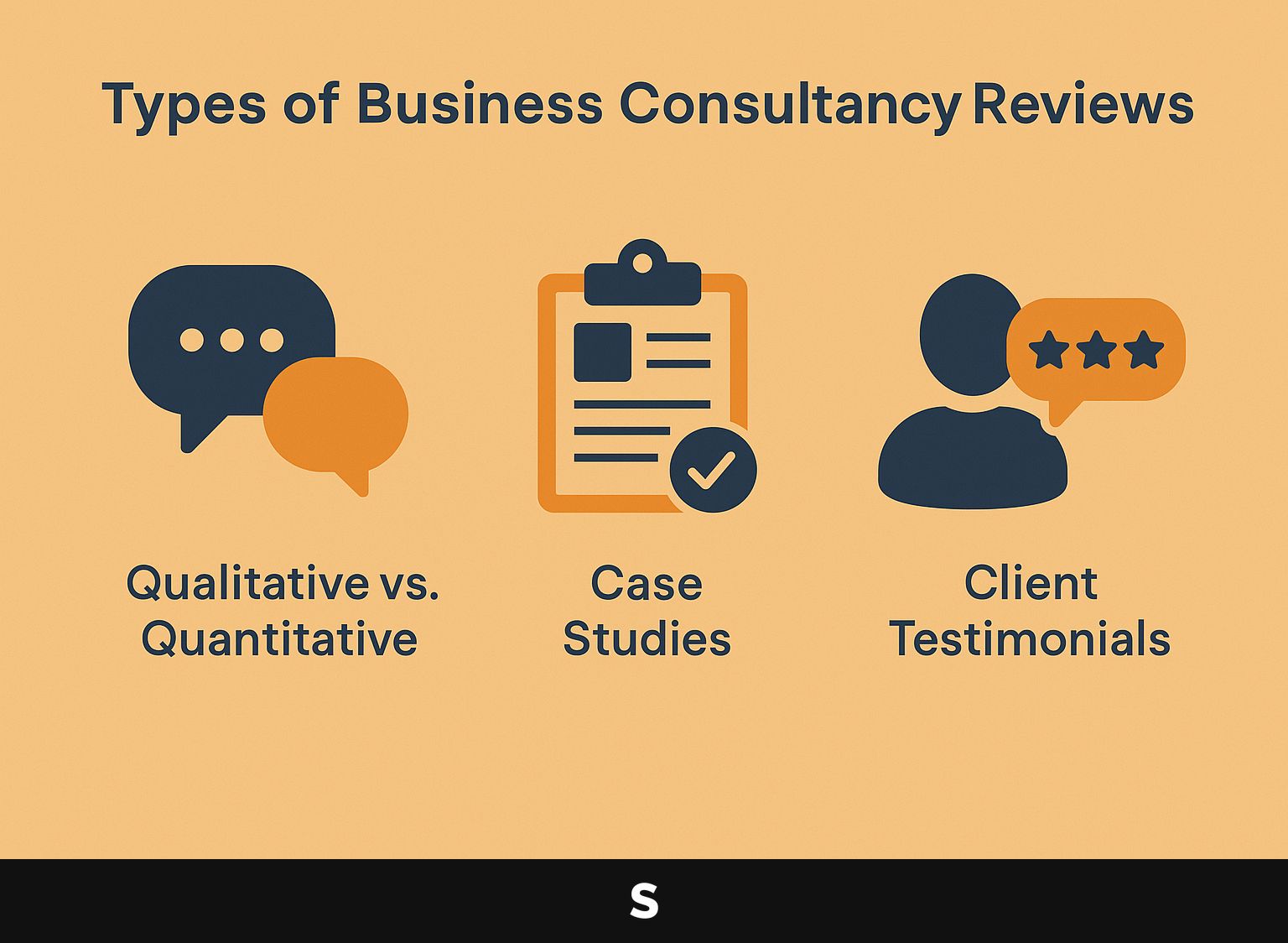
Qualitative vs. Quantitative reviews
Qualitative reviews tell stories about client experiences, while quantitative reviews give numbers and measurements that help evaluate the effects of consulting.
Both types serve distinct purposes in evaluations. Qualitative reviews present personal customer stories, demonstrating how a consultancy has improved a client’s experience. For instance, a marketing agency assisted a local business in increasing its sales by developing personalized plans.
On the other hand, quantitative reviews use statistics to present outcomes, such as a consulting firm increasing client revenue by 30% in six months.
Selecting between them depends on your audience: use qualitative for emotional engagement and storytelling, and quantitative for convincing with hard evidence.
Case studies as a form of review
Case studies are strong examples of consultancy achievements, showing clear strategies and results, such as the improvements in operations reported by clients.
For instance, a marketing firm might highlight a case study where it increased a client’s website traffic by 150% within three months. This would detail strategies such as targeted SEO, content marketing, and social media engagement.
Tools like Google Analytics could be mentioned to track progress while presenting metrics before and after the intervention. By clearly stating problems, steps taken, and outcomes, these examples show the real advantages of consultancy, drawing in new clients and proving the firm’s reliability.
Client testimonials and their significance
Customer reviews are important for gaining trust in a brand and encouraging potential clients. They frequently show real advantages of consultancy work, such as higher profits or better efficiency.
To effectively gather and present client testimonials, start by reaching out shortly after project completion.
Use tools like SurveyMonkey to create brief, structured feedback forms focusing on specific outcomes, such as ROI or satisfaction. Ask them directly for a testimonial by explaining how their experience could help future clients.
After collecting these testimonials, create attractive visuals for social media or include them in case studies on your website. This method increases trust and gives practical advice for upcoming clients.
How to Obtain Tangible Reviews
Getting real reviews requires approaches that motivate clients to share their experiences and outcomes, strongly affecting their decision to recommend consultancy services.
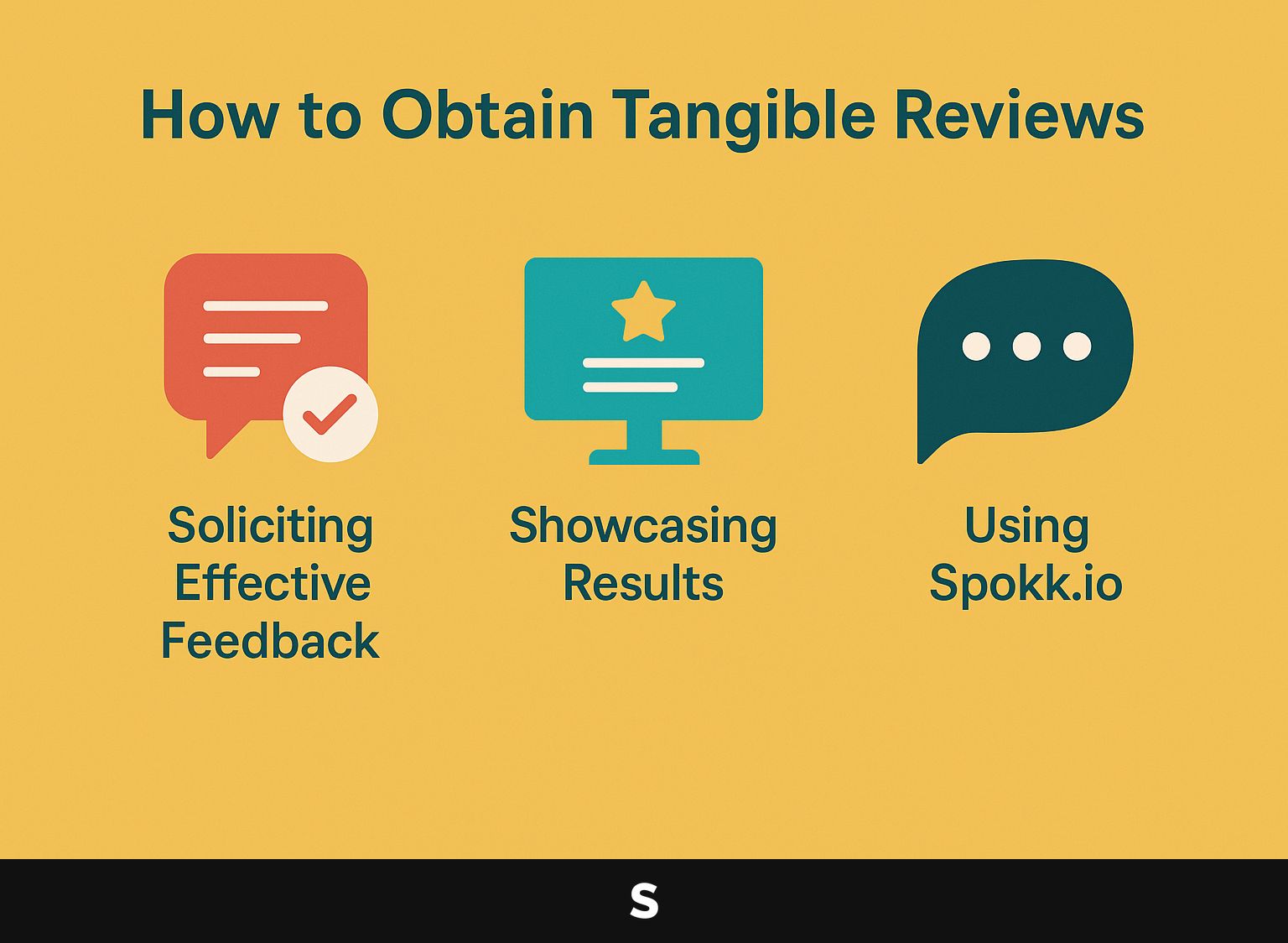
Strategies for soliciting effective feedback
Getting useful feedback means reaching out individually and asking clear, pointed questions that help clients explain their experiences in detail and with numbers.
To collect practical feedback, use surveys after projects that include rating scales for various parts of the service, and follow up with open-ended questions.
For example, once a project is finished, send a survey asking clients to rate their satisfaction from 1 to 10, and include a question like, “What specific changes caught your attention?”
Schedule follow-up calls to discuss feedback in detail, engaging clients in a conversation about their experience.
Tools like SurveyMonkey or Google Forms can make this process easier and help you collect useful data quickly.
Best practices for showcasing results in reviews
To present results well in reviews, include specific numbers, such as a 23% rise in profits, and share stories that connect with possible clients.
To improve your reviews, focus on using specific measurements. For example, provide data like how often customers return or how much users interact, along with examples of how clients have changed.
Use templates that ask reviewers to explain the problems they encountered and the solutions they used, including numbers to show results. Tools like Google Analytics can help extract relevant data, while software like Canva enables the creation of visually appealing charts that summarize these results.
By connecting numbers to personal stories, you create an engaging story that grabs the attention of possible clients.
Using Spokk.io for gathering actionable reviews
Spokk.io makes it easy for consultants to gather and study client reviews, helping them improve their services over time.
To maximize Spokk.io’s potential, follow these steps:
- First, integrate the platform with your existing CRM or email systems for seamless client communication.
- Next, create customized review templates to tailor requests to specific services or projects.
- When reviews are received, use Spokk.io’s reporting tools to examine patterns and identify areas that need improvement.
- Motivate clients to provide detailed feedback by giving rewards or acknowledging their input, which helps create a culture of ongoing feedback.
This proactive method can greatly improve your consulting work.
Real-Life Examples of ROI in Consultancy
Looking at real-world cases of return on investment in consultancy shows the substantial effects consultants can have on how clients run their businesses, with clear results that prove their services are worthwhile.
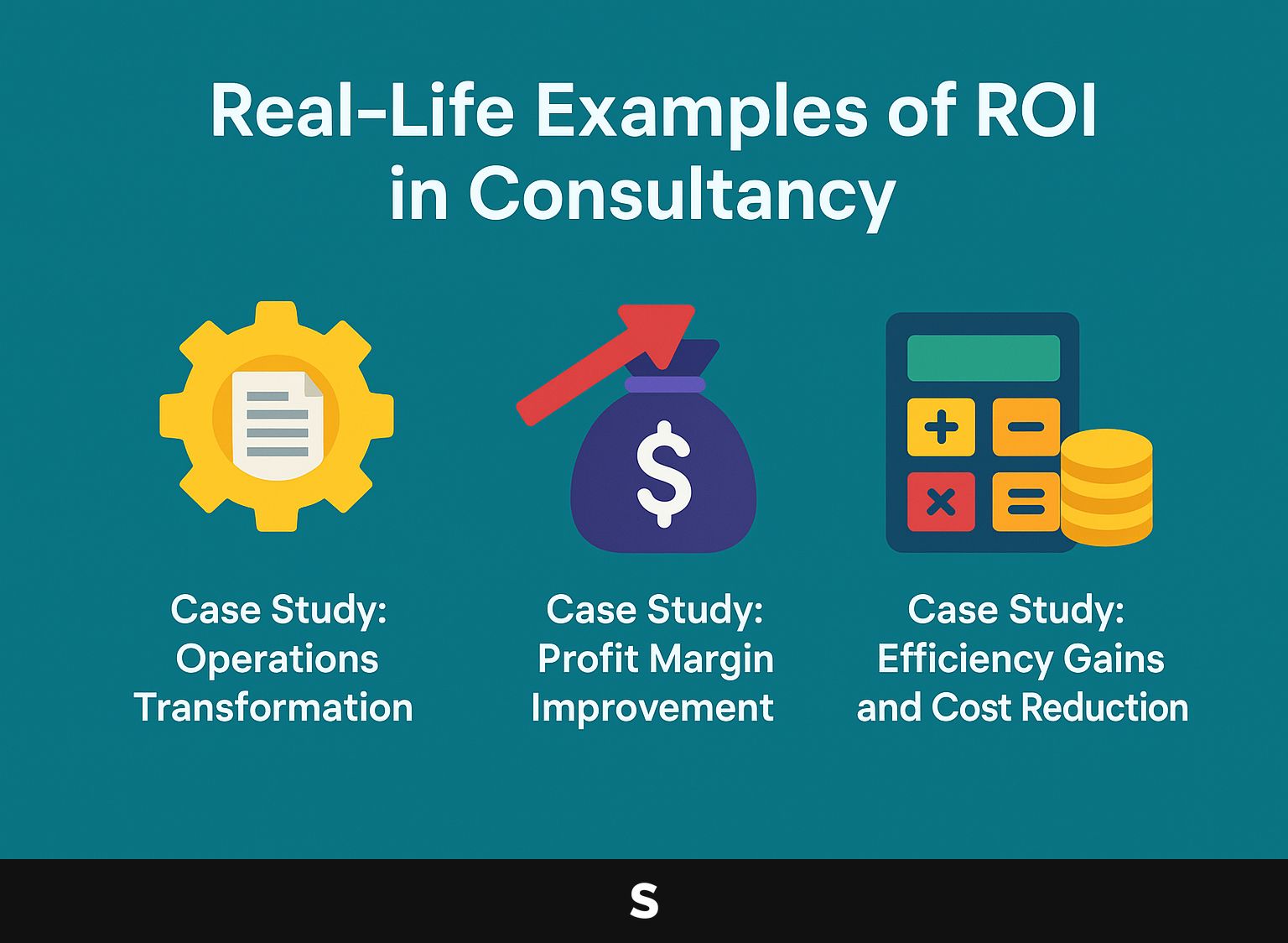
Case Study: Operations Transformation
A recent case study showed how a consultancy worked with a client to improve their operations. They found areas where the client was wasting resources, which resulted in a 23% profit increase in six months.
The consultancy used different methods: they started by doing a detailed review of the workflow to identify delays, then applied efficient management practices to make processes smoother.
Tools like Trello for task management and Tableau for data presentation were important for tracking progress. Clients reported feeling more engaged and focused, with one stating, ‘Our team now collaborates seamlessly, and the output speaks for itself.’
Regular reviews and flexible plans led to continuous progress and maintained profits.
Case Study: Profit Margin Improvement
A consultancy’s involvement led to a significant increase in profit margins, showing how focused strategies can provide real financial gains for clients.
The consultancy used specific strategies to accomplish this.
- First, they thoroughly reviewed costs to find ways to cut expenses, like problems in the supply chain or unneeded extra costs.
- They also introduced performance metrics, like tracking monthly profit margins and comparing them against industry benchmarks.
For example, by using tools like QuickBooks or Tableau, clients understood how well sales were doing and what their operating costs were. By adjusting prices to match market demand and improving how they manage inventory, many clients saw their profit margins grow by more than 20% in six months.
Case Study: Efficiency Gains and Cost Reduction
This case study illustrates how a consultancy helped a client achieve efficiency gains and cost reductions, leading to a better operational outcome.
The consultancy used different methods, such as outlining processes, automating regular tasks, and training employees.
They carefully monitored information like how long tasks took, how often mistakes happened, and how happy employees were. For example, they used tools like Asana for managing tasks and Tableau for visualizing data, which gave clear information about operational problems.
By continuously measuring these metrics, the team could adjust their approach, resulting in a 30% reduction in operational costs within six months. This detailed assessment highlights the importance of measurements in improving consultancy work.
Challenges in Demonstrating Real ROI
Proving the real financial gain from consultancy is challenging. Clients may question the worth and there are difficulties in measuring results, which can make it harder to get new projects.
Common pitfalls in measuring consultancy success
Common pitfalls in measuring consultancy success include vague metrics, lack of follow-up, and failure to communicate results effectively to clients.
To overcome these challenges, start by defining specific, measurable outcomes that align with client goals.
Use tools like Google Analytics to track how well you’re doing and change your strategy based on the information you find.
Implement regular follow-ups, such as bi-weekly check-ins, to discuss progress and gather feedback.
Most importantly, create detailed reports that simplify complex data into useful findings, using visuals to make the information clearer.
This structured method clarifies measurements and encourages open communication, leading to stronger client relationships and better results.
How to address skepticism from potential clients
To address skepticism from potential clients, consultants must provide clear evidence of past successes and demonstrate measurable results, like the 23% profit increase achieved by previous clients.
Sharing detailed examples of cases can strongly improve credibility. For example, create a document outlining the challenges faced, the strategies implemented, and the specific outcomes achieved for each client.
Supplement this with testimonials that highlight clients’ experiences and satisfaction. Maintain open lines of communication throughout the engagement, discussing realistic expectations and providing regular updates.
Tools like Google Analytics can help track and present these results effectively, showing clients tangible progress towards their goals.
Bridging Question: What makes a consultancy review credible?
A reliable consultancy review includes specific data, feedback from clients, and clear examples that show the concrete effects of consultancy services.
Technology’s Role in Consultancy Reviews
Technology is important in improving consultancy reviews by making it easy to collect, analyze, and share client feedback through online platforms.
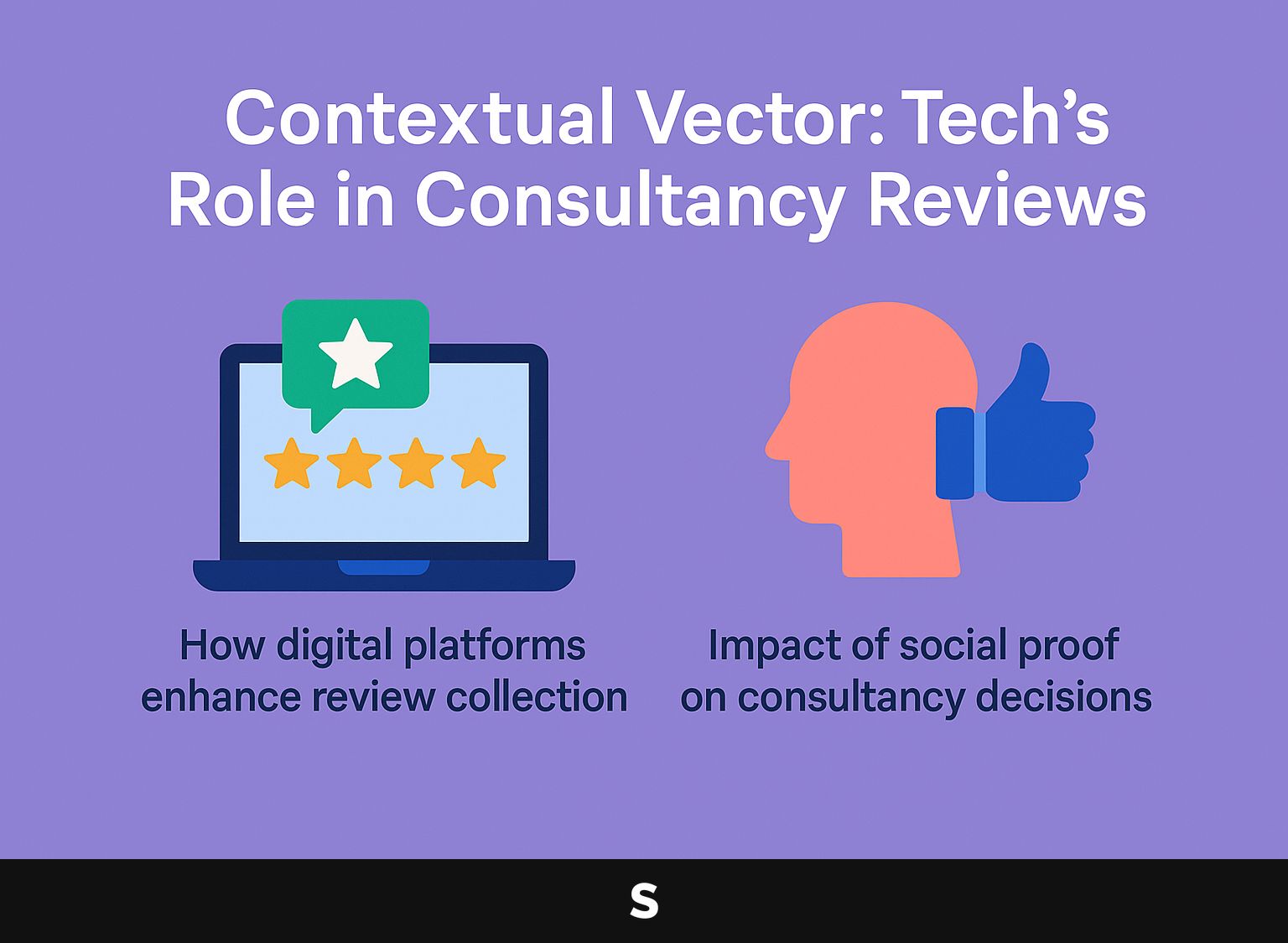
How digital platforms improve gathering reviews
Digital platforms make it easier to collect reviews, allowing consultants to quickly gather feedback and study client experiences.
For example, tools like GatherUp can send review requests automatically via email and SMS, increasing collection rates by up to 30%. Integrating platforms such as Zapier can connect your review tool with other applications, enabling seamless data flow.
Using sentiment analysis features in tools like ReviewTrackers helps consultants understand client perceptions quickly. Creating regular dashboards with platforms like Trustpilot makes important feedback easy to access, allowing you to reply quickly and keep good client connections.
Social proof, manifested through client testimonials and reviews, significantly influences consultancy decisions by establishing credibility and trust with potential clients.
To effectively showcase social proof, consider implementing these actionable strategies:
- First, prominently display testimonials on your homepage and service pages to catch visitors’ attention immediately.
- Second, use video testimonials to build a closer relationship, as they often bring out stronger emotions.
- Third, encourage satisfied clients to leave reviews on platforms like Google My Business and LinkedIn, enhancing visibility.
Share case studies that highlight specific results achieved through your services, providing concrete proof of your value. Together, these techniques build trust and motivate potential clients to work with your consultancy.
Upcoming Trends in Business Consultancy Reviews
Upcoming patterns in business consultancy assessments show a move towards feedback systems that use technology and focus on involving clients more.
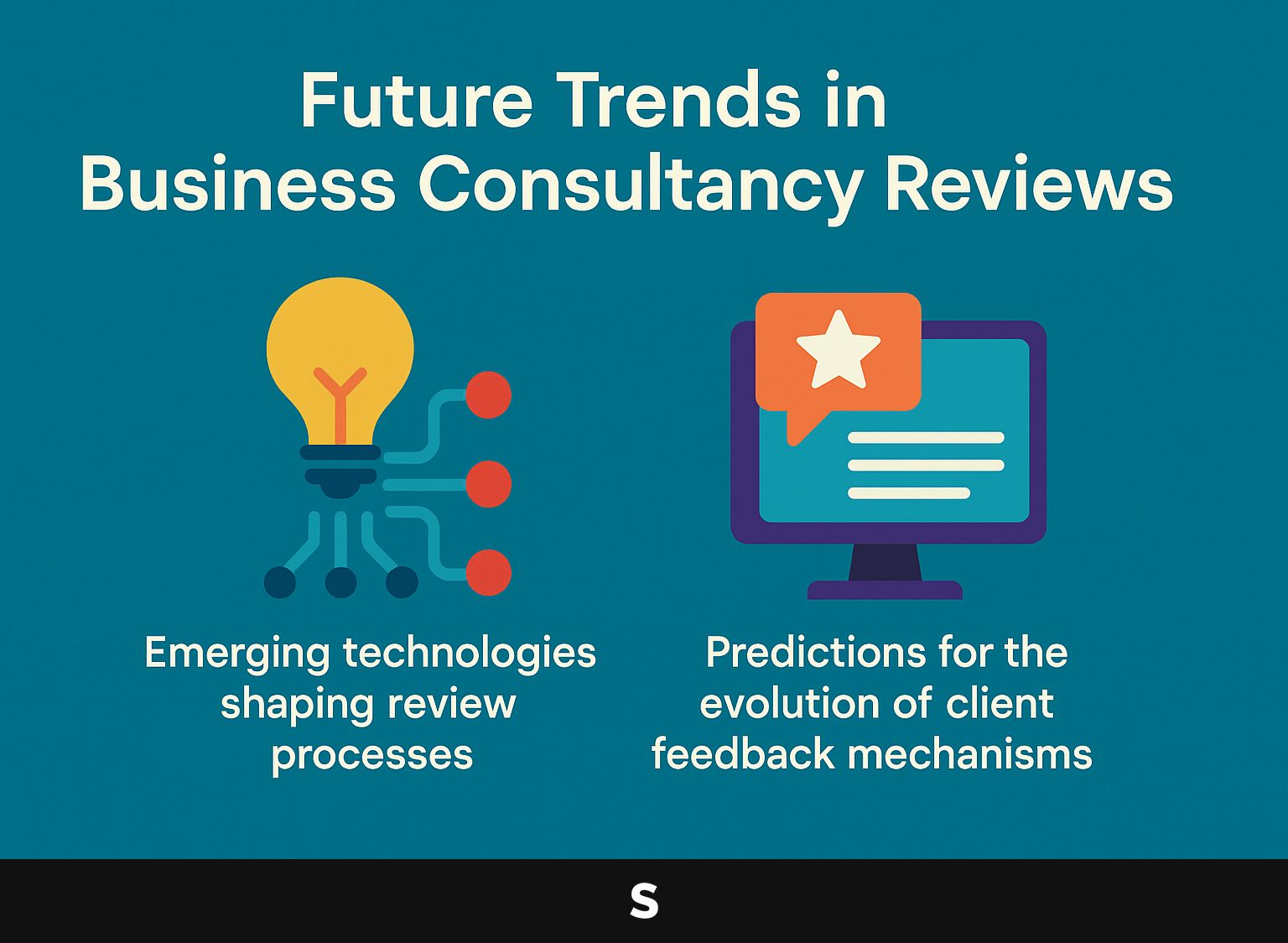
Emerging technologies shaping review processes
New technologies, such as AI and big data analysis, will soon simplify the review process, helping to gather feedback more effectively and with more detailed information.
For instance, AI-driven sentiment analysis can automatically evaluate client feedback, highlighting trends in their responses.
Tools like IBM Watson can process large amounts of data, identifying key themes without human intervention.
Platforms like Qualtrics use big data to analyze feedback instantly, letting consultants change strategies right away.
By using these technologies, companies reduce time spent and better understand customer needs, resulting in more customized services and increased customer satisfaction.
Predictions for the evolution of client feedback mechanisms
Client feedback systems will soon frequently use live feedback and AI, which will make the review process easier.
Organizations can use platforms like Medallia and Qualtrics to collect immediate feedback via kiosks and mobile apps. AI tools like Talla for chatbots or Conversica for follow-up messages make sure that client questions get quick replies.
Using these technologies improves response rates and provides detailed analytics, enabling businesses to quickly change strategies. By keeping up with these new ideas, companies can build better relationships with clients, which can lead to more loyalty and better services.
Building a Strong Reputation through Reviews
Consultancy firms need good reviews to build a strong reputation, which helps in gaining trust and keeping clients.
How positive reviews contribute to brand trust
Positive reviews greatly build brand trust, as they show that a consultancy can achieve results, influencing client choices.
Research indicates that 79% of consumers trust online reviews as much as personal recommendations. For consultancies, maintaining an average rating of at least 4 stars can increase conversion rates by 50%.
Tools like Google My Business and Trustpilot can monitor and encourage reviews effectively. Strategically responding to reviews-both positive and negative-demonstrates attentiveness, further reinforcing your brand’s reliability.
By adding requests for reviews in your follow-up emails, you can increase the number of responses, leading to a stronger online presence that draws in new customers.
Strategies for maintaining a strong online presence
Building a solid online presence means regularly checking reviews and interacting with customers. This helps create a good reputation and encourages customers to return.
- One effective strategy is to monitor reviews across platforms like Google, Yelp, and Facebook. Use tools like Google Alerts or Mention to get notified when your business is talked about.
- When you get feedback, reply quickly and politely. Make sure to recognize each review, no matter if it’s good or bad. For instance, express gratitude to those who leave positive comments and offer solutions to those with complaints.
- Showcase these reviews on your social media channels, highlighting customer testimonials to build trust and attract new clients.
Leveraging Reviews for Business Growth
Using reviews well can help a business grow. They act as useful marketing tools that show a consultancy’s worth to possible clients.
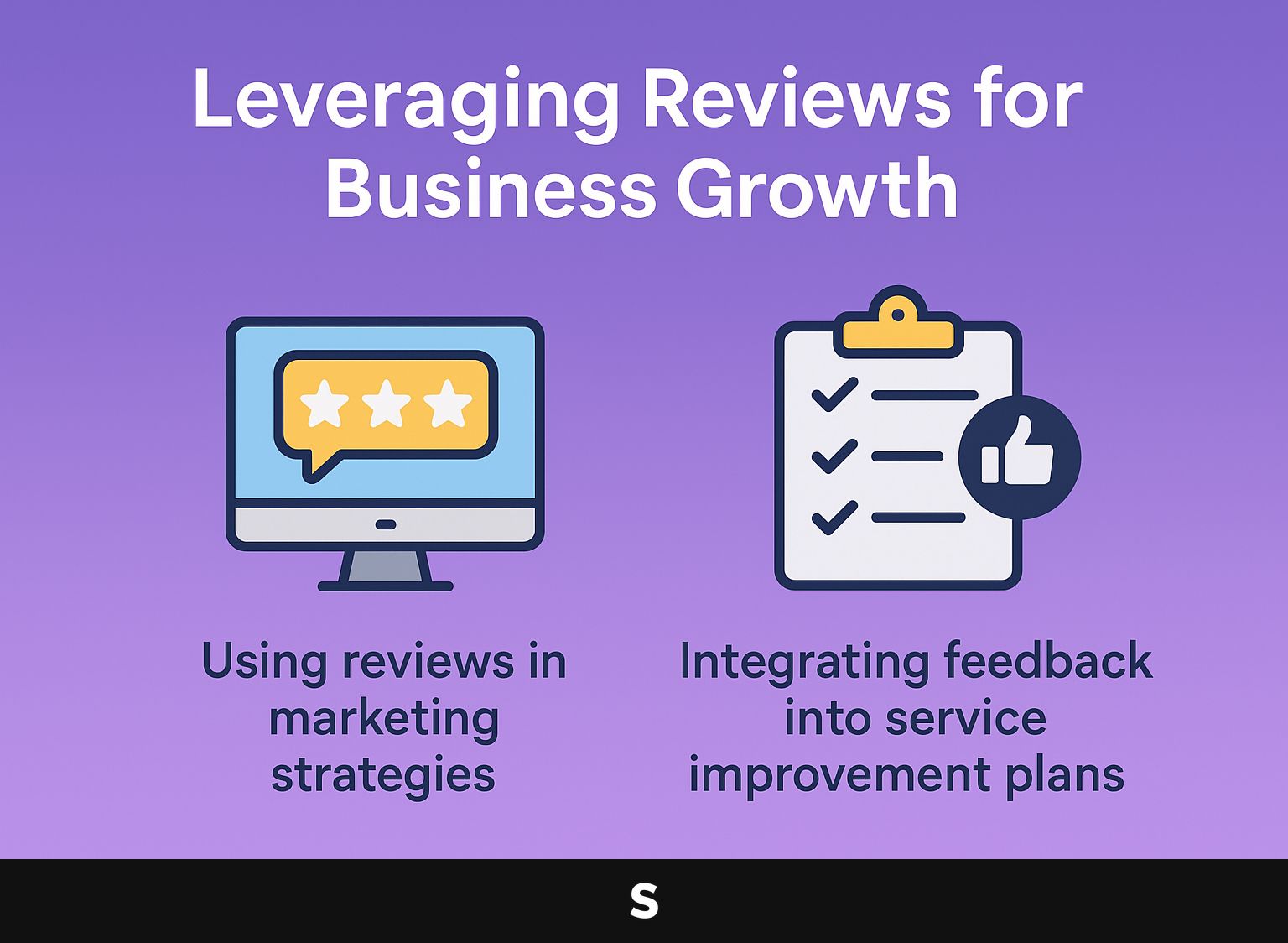
How to use reviews in marketing strategies
Using client feedback in marketing plans can greatly increase a consultancy’s visibility and appeal to new clients by highlighting actual success stories.
To effectively include reviews, use social media posts with client comments and images, and display testimonials clearly on your website.
Create dedicated pages for case studies that detail client challenges and your solutions.
For tracking effectiveness, implement analytics tools like Google Analytics to monitor referral traffic and conversion rates from these testimonials.
Update your content often to keep it new and interesting, so your audience can see the results of your consultancy with clear real-life examples.
Integrating feedback into service improvement plans
Listening to client feedback helps improve services, ensuring consulting remains relevant and current.
Begin by setting up consistent feedback methods using surveys or personal interviews to gather client opinions. Use tools like Google Forms for surveys, or try Typeform for a more interactive experience.
- Analyze this data monthly to identify trends and areas for improvement.
- Set up quarterly meetings for team members to present what they have learned to promote accountability within the team.
Implement changes based on feedback and monitor results, using key performance indicators (KPIs) to measure impact, ensuring adjustments align with client needs.
Frequently Asked Questions
What is the importance of business consultancy reviews that demonstrate real ROI?
Reviews of business consultancy that show actual return on investment give useful information about how well a consultant’s work is performing. They showcase measurable results and help potential clients make informed decisions about hiring a consultant.
How do real ROI reviews benefit consultants?
Real ROI reviews serve as powerful marketing tools for consultants. They present their knowledge, past achievements, and the real outcomes they have achieved for past clients. This can help attract new clients and establish credibility in the consultancy industry.
Can real ROI reviews help businesses make better decisions when hiring a consultant?
Absolutely. Real ROI reviews provide concrete evidence of a consultant’s capabilities and effectiveness. By looking at these reviews, businesses can make smarter choices when picking a consultant and better estimate the possible return on investment.
How can I find business consultancy reviews that demonstrate real ROI?
One way to find real ROI reviews is by asking for referrals from other businesses or industry connections. You can also search online for consultancy review websites or directly ask the consultant for examples of real ROI reviews from their previous clients.
What should I look for in a real ROI review for a business consultant?
Look for specific numbers and data that demonstrate the impact of the consultant’s work. This can include metrics such as increased profit margins, cost savings, efficiency improvements, or revenue growth. Also, pay attention to the testimonial itself and the overall satisfaction of the client.
How can I use real ROI reviews to assess the effectiveness of a business consultant?
Real ROI reviews show the real results and effects that a consultant has achieved for past clients. By looking at these reviews, you can assess the consultant’s skills, past achievements, and how well they match your business requirements.
